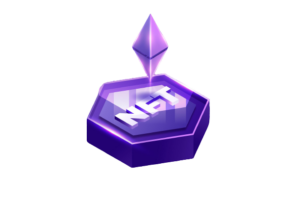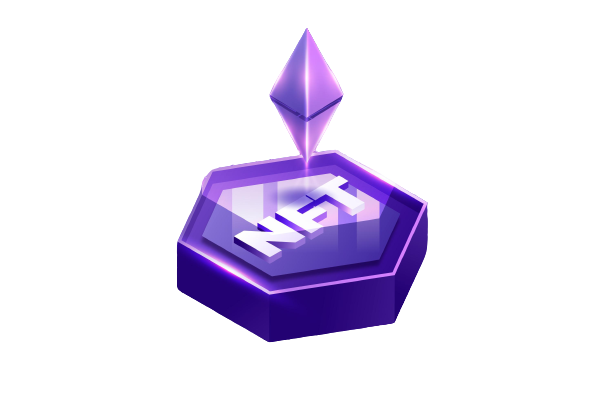
If you have been online or red any news in the last couple of years, then you have probably heard of NFTs. They became enormously popular in 2021 and are now an asset many wish to have in their portfolio. But what are NFTs, and why have they become so popular?
The term “NFT” stands for non-fungible token, which refers to a unique digital asset that is stored on a blockchain. These tokens have become increasingly popular in recent years, especially within the art world. NFTs allow artists to sell their digital creations as one-of-a-kind items that cannot be replicated or duplicated. But where did this concept come from?
The first instance of an NFT can be traced back to 2012 with the creation of Colored Coins. Colored Coins were a type of digital asset that allowed users to “color” a Bitcoin with additional data. This additional data could represent anything from stocks and bonds to property rights and collectibles. Colored Coins laid the groundwork for the creation of more complex digital assets that could represent unique items.
In 2014, the game Spells of Genesis was released, which introduced the concept of digital collectibles. Players could earn unique cards within the game and could be traded with other players. These digital cards were stored on the Bitcoin blockchain, making them unalterable and proving their rarity. Spells of Genesis was a significant step forward in developing NFTs, as it demonstrated the potential for unique digital items to hold value.
The first NFT marketplace, called CryptoPunks, was launched in 2017. CryptoPunks consisted of 10,000 unique 8-bit characters that were generated algorithmically. Each character had its own distinct attributes, such as hats or glasses, and could be bought, sold, or traded. CryptoPunks quickly gained popularity within the crypto community, with some characters selling for millions of dollars. The success of CryptoPunks demonstrated the potential for NFTs to hold significant value, and it paved the way for the development of more complex NFTs.
In 2019, the blockchain game Axie Infinity was released, which introduced the concept of NFT-based gaming. Axie Infinity is a game that allows players to collect, breed, and battle creatures called Axies. Each Axie is a unique NFT, and players can buy, sell, and trade Axies on the game’s marketplace. Axie Infinity has become incredibly popular, with some Axies selling for tens of thousands of dollars. The success of Axie Infinity demonstrated the potential for NFTs to be used in gaming and other interactive digital experiences.
The NFT market exploded in 2021, with several high-profile sales bringing attention to the concept. In March 2021, a digital artwork by the artist Beeple sold for $69 million at a Christie’s auction. The artwork, called “Everydays: The First 5000 Days,” was a collection of 5,000 individual digital artworks that had been created over 13 years.
The sale was a watershed moment for NFTs, as it demonstrated that digital art could hold significant value. Several other high-profile NFT sales followed in 2021, including the sale of a tweet by Twitter CEO Jack Dorsey for $2.9 million and the sale of a digital house for $500,000. These sales brought mainstream attention to the concept of NFTs and sparked a flurry of activity within the NFT market.
The rise of NFTs has not been without controversy, however. Some critics argue that NFTs are a bubble that will eventually burst, while others criticize the environmental impact of the blockchain technology that NFTs rely on. Because NFTs are stored on a blockchain, they require a significant amount of computing power to create and maintain. This computing power requires energy, which has led to concerns about the carbon footprint of NFTs and their impact on the environment.
Despite these criticisms, the NFT market continues to grow and evolve. In addition to art and gaming, NFTs are being used in various other industries, including sports, music, and fashion. Sports teams use NFTs to sell digital collectibles, while musicians use NFTs to sell unique experiences and merchandise. Fashion brands are also exploring the potential of NFTs, with some creating virtual clothing that can be worn in online games or social media platforms.

As the NFT market continues to evolve, it’s clear that the concept of unique digital assets is here to stay. NFTs could revolutionize how we think about ownership and value in the digital age. By creating one-of-a-kind digital assets, NFTs allow creators to monetize their work in new and innovative ways. And because NFTs are stored on a blockchain, they offer a level of security and verifiability that is impossible with traditional digital assets.
However, it’s important to recognize that the NFT market is still in its early stages, and there are risks associated with investing in NFTs. As with any investment, it’s important to do your research and understand the risks before investing in NFTs. It’s also important to be aware of the environmental impact of NFTs and consider the sustainability of the blockchain technology that underpins them.
Looking ahead, the future of NFTs is filled with possibilities. As the technology behind NFTs continues to improve and evolve, we will likely see new and innovative use cases emerge. One area that is ripe for exploration is the use of NFTs in the world of virtual reality.
With the rise of virtual reality, there is a growing need for unique and valuable digital assets that can be used in immersive virtual environments. NFTs could play a key role in creating and monetizing these assets. For example, virtual real estate could be sold as NFTs, allowing individuals and companies to own and sell unique parcels of digital land.
Another area where NFTs could have a significant impact is in the world of e-commerce. By using NFTs to represent physical goods, retailers could create a more secure and efficient system for buying and selling products online. NFTs could also be used to represent digital certificates of authenticity, ensuring that buyers are purchasing genuine products.
Of course, as with any new technology, there are also risks and challenges associated with NFTs. As the market grows, we may see increased competition and a flood of low-quality or fraudulent NFTs. It’s important for creators and buyers alike to do their due diligence and ensure that the NFTs they create or purchase are of high quality and genuine.
Despite these challenges, the potential of NFTs is enormous. By creating a system for unique digital ownership, NFTs have the potential to revolutionize the way we think about digital assets. As the market continues to evolve, it will be exciting to see how creators, buyers, and investors use this new technology to reshape the digital landscape. The technology behind NFTs and other blockchain-related objects has shown to be useful in several fields, and it is not unlikely that we will be seeing more of it in various industries.
Although the history of NFTs is relatively short, it’s a story that is still being written. From the early days of Colored Coins to the explosive growth of the NFT market in 2021, NFTs have the potential to revolutionize the way we think about digital ownership and value. While there are risks associated with investing in NFTs, the potential rewards are significant. As the NFT market continues to evolve, it will be exciting to see how creators and collectors use this new technology to create, share, and own unique digital assets.
© 2025 nftguide.nz